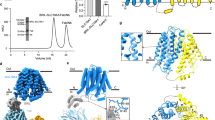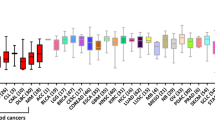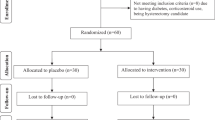Abstract
The use of isotopically labelled compounds as metabolic tracers in in vivo and in vitro studies is particularly important in folate biochemistry, where the natural coenzyme forms occur in transient and trace amounts. However, during our studies on the whole body metabolism of radioactive folate tracers, we have now observed that some forms of isotopically labelled folate are biologically distinguishable from the unlabelled carrier molecules by an as yet unidentified secondary isotope effect. Folates excreted in the urine of rats dosed previously with mixtures of 14C- and 3H-labelled folate derivatives are apparently 3H enriched, that is contain more 3H than 14C relative to the dosed compound. This apparent 3H enrichment was largely due to the enhanced absorption of 3H-folate from the intestine, confirmed by studies with everted sac preparations of rat jejunum in which it was found that the 3H-labelled folate in the mixture was transported from the mucosal into the serosal compartment at a faster rate than both the 14C-labelled folate and the unlabelled carrier. Secondary isotope effects were also observed on ion-exchange chromatography, 3H-labelled folates with 3H at the C-9 position eluting fractionally earlier than the corresponding unlabelled or [2-14C]folate from DEAE-cellulose, a behaviour similar to that reported earlier for isotopically labelled 2-aminopurine1 and several amino acids2. Such isotope effects may be more widespread and more important than is generally accepted.
This is a preview of subscription content, access via your institution
Access options
Subscribe to this journal
Receive 51 print issues and online access
$199.00 per year
only $3.90 per issue
Buy this article
- Purchase on SpringerLink
- Instant access to full article PDF
Prices may be subject to local taxes which are calculated during checkout
Similar content being viewed by others
References
Gottschling, H. & Freese, E. Nature 196, 829–831 (1962).
Klein, P. D. & Szczepanik, P. A. J. Chromatogr. 42, 493–502 (1969).
Connor, M. J., Pheasant, A. E. & Blair, J. A. Biochem. J. 178, 795–797 (1979).
Pheasant, A. E., Connor, M. J. & Blair, J. A. (in preparation).
Wilson, T. H. & Wiseman, G. J. Physiol., Lond. 123, 106–125 (1954).
Maruyama, T., Shiota, T. & Krumdieck, C. L. Analyt. Biochem. 84, 277–295 (1978).
Klein, P. D., Simborg, D. W. & Szczepanik, P. A. Pure appl. Chem. 8, 357–370 (1964).
Tanaka, N. & Thornton, E. R. J. Am. chem. Soc. 98, 1617–1619 (1976).
Author information
Authors and Affiliations
Rights and permissions
About this article
Cite this article
Connor, M., Blair, J. & Said, H. Secondary isotope effects in studies using radiolabelled folate tracers. Nature 287, 253–254 (1980). https://doi.org/10.1038/287253a0
Received:
Accepted:
Issue date:
DOI: https://doi.org/10.1038/287253a0



